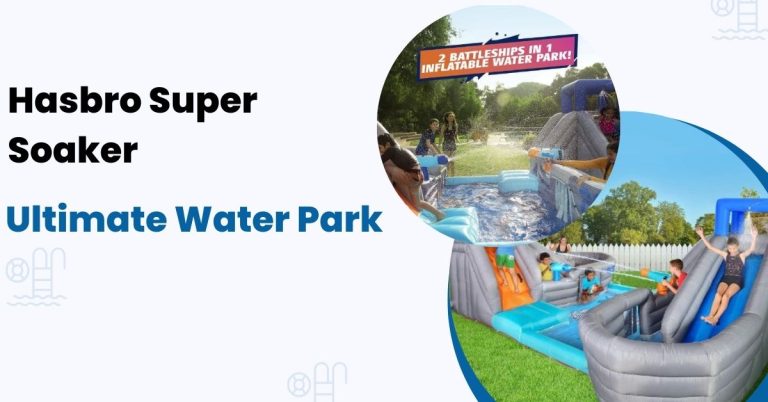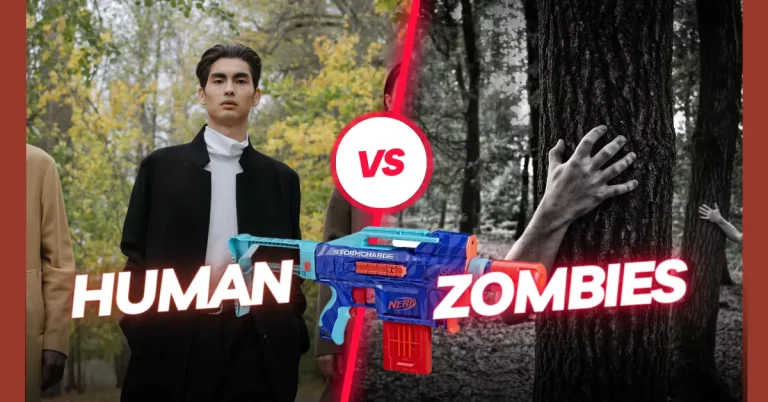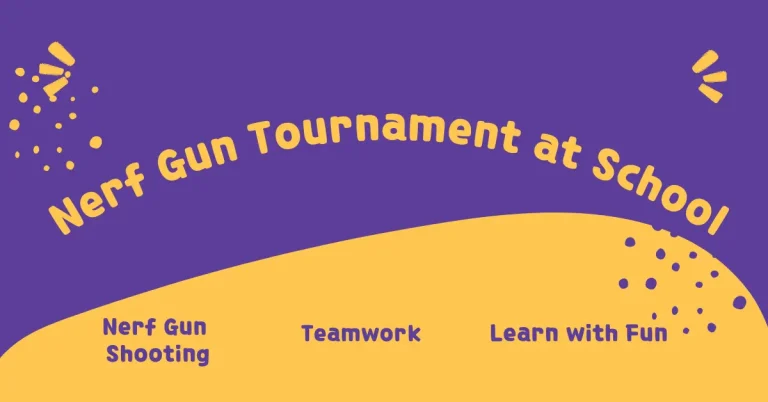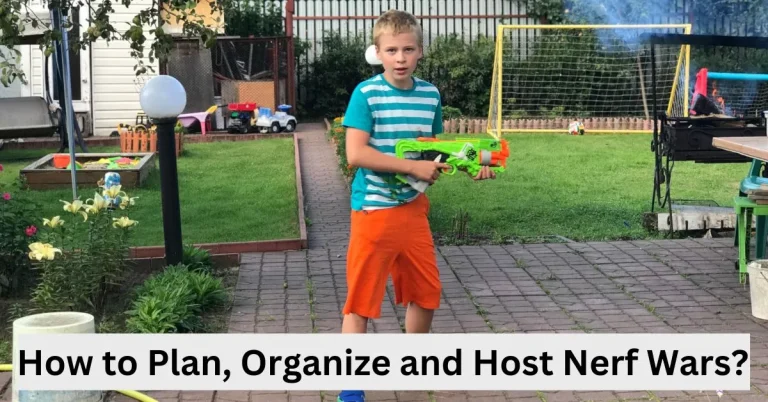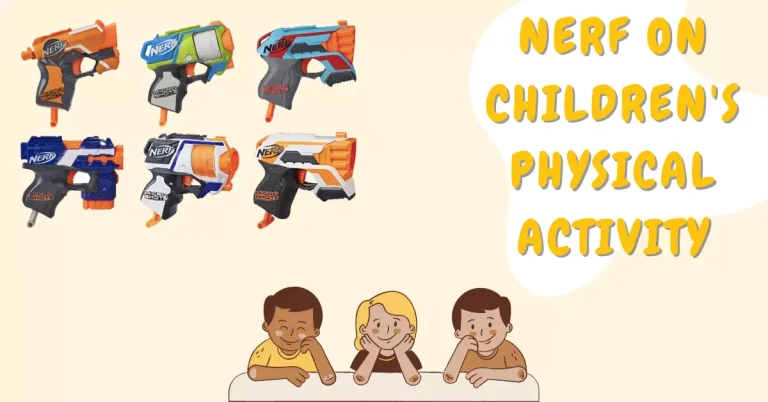DIY Nerf Battlefields: Creating the Ultimate Play Space
The difference between an ordinary Nerf battle and an extraordinary one often comes down to the battlefield. While any open space can serve as a basic arena for foam dart combat, a thoughtfully designed battlefield transforms the experience into something truly memorable.
Creating your own DIY Nerf battlefield allows you to customize the play environment to suit your space, budget, and preferred game styles while dramatically enhancing the strategic depth and enjoyment of Nerf battles.
This comprehensive guide will walk you through everything you need to know about designing, building, and optimizing your own Nerf battlefield.
If you’re planning a backyard setup for family fun, a basement arena for rainy day play, or an elaborate battlefield for a Nerf-themed birthday party, you’ll find practical advice, creative ideas, and step-by-step instructions to bring your vision to life.
With some basic materials, a bit of creativity, and the tips in this guide, you’ll be able to create a custom battlefield that will elevate your Nerf battles to the next level.
Planning Your Battlefield
Before gathering materials or building obstacles, proper planning is essential to create a battlefield that’s both fun and functional.
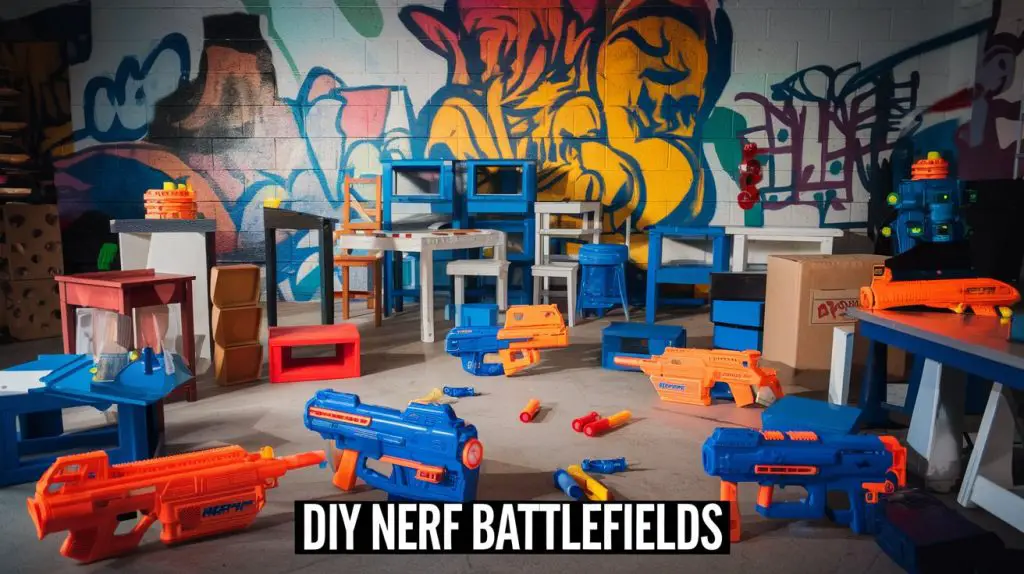
Assessing Your Space
The first step in creating your DIY Nerf battlefield is evaluating the available space:
Outdoor Spaces:
- Backyards: Measure the usable area, noting permanent features like trees, sheds, or play equipment that can be incorporated into your design.
- Driveways and Cul-de-sacs: Consider temporary setups that can be quickly assembled and disassembled.
- Parks: If using public spaces, focus on portable obstacles that comply with park regulations.
Indoor Spaces:
- Basements: Measure ceiling height and identify structural elements to work around.
- Garages: Consider vehicle storage needs and create modular obstacles that can be stored when not in use.
- Community Centers/Gymnasiums: For rented spaces, design lightweight, portable battlefield elements.
Space Considerations:
- Allow approximately 100-150 square feet per player for comfortable movement
- Ensure at least 6-8 feet between major obstacles for movement lanes
- Create a minimum 5-foot buffer zone around the perimeter for safety
- Account for doorways, windows, and other fixed elements
Determining Your Budget
Battlefield construction can be accomplished on virtually any budget:
Budget-Friendly ($0-$50):
- Repurposed household items (furniture, cardboard boxes)
- Bedsheets and blankets for barriers
- Existing outdoor play equipment incorporated into design
Mid-Range ($50-$200):
- PVC pipe frameworks with fabric coverings
- Plywood or foam board constructions
- Basic lighting elements
- Simple electronic features (buzzers, timers)
Premium ($200+):
- Custom-built wooden structures
- Specialized battlefield materials
- Advanced lighting and sound systems
- Electronic scoring systems
Selecting a Theme
A cohesive theme enhances immersion and can guide your design choices:
Popular Battlefield Themes:
- Military/Tactical: Bunkers, sandbag walls, command posts
- Post-Apocalyptic: Scavenged materials, makeshift barriers, survival outposts
- Sci-Fi: Futuristic barriers, alien landscapes, space station elements
- Urban Combat: City streets, building facades, construction zones
- Fantasy: Castle walls, enchanted forests, dragon lairs
- Sports Arena: Team-colored zones, scoreboard areas, locker room bases
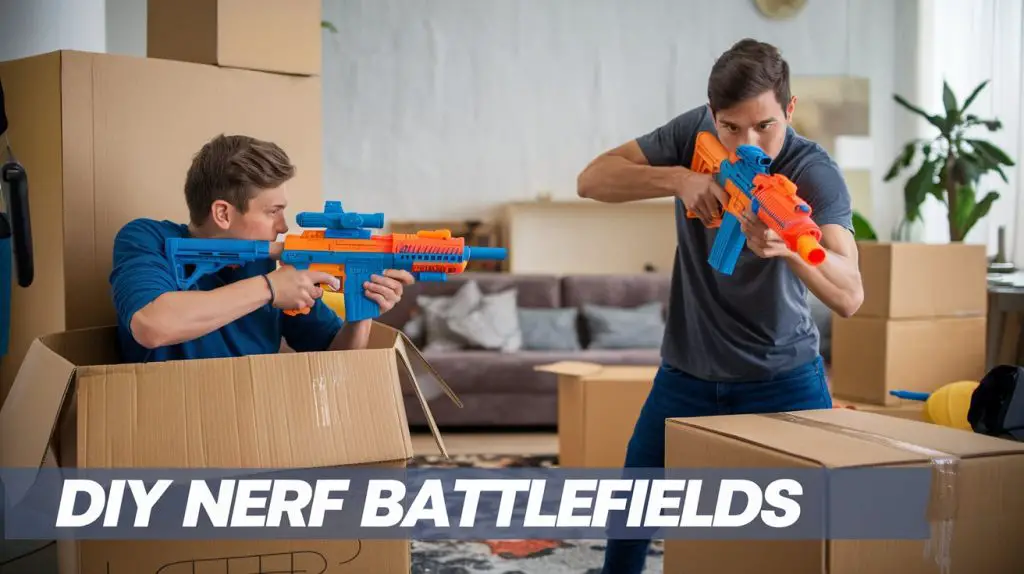
Creating a Layout Plan
Sketch your battlefield layout before building to ensure balanced gameplay:
Essential Layout Elements:
- Starting Zones: Designated areas where teams begin (typically at opposite ends)
- Cover Density: Aim for 30-40% of the field to be covered by obstacles
- Movement Lanes: Clear paths that allow strategic movement across the field
- Choke Points: Narrower passages that create tactical decision points
- Objective Locations: Designated spots for flags, control points, or other game objectives
Layout Patterns:
- Symmetrical: Identical obstacle placement for both teams (best for competitive play)
- Asymmetrical: Different terrain for each team, requiring adaptive strategies
- Hub and Spoke: Central focal point with radiating pathways
- Maze-like: Complex pathways with multiple route options
- Tiered: Multiple height levels for vertical gameplay elements
Essential Materials and Tools
The right materials make battlefield construction easier and create more durable play elements.
Basic Building Materials
Structural Elements:
- PVC Pipes and Connectors: Lightweight, affordable framework material
- Wooden Pallets: Free/low-cost, pre-built platforms and barriers
- Cardboard Boxes: Easily modified, temporary structures
- Plywood Sheets: Durable barriers and platforms
- Pool Noodles: Flexible, safe barrier material
- Foam Insulation Boards: Lightweight, easy-to-cut barrier material
Coverings and Attachments:
- Tarps: Durable, weather-resistant coverings
- Bed Sheets: Inexpensive barrier material for indoor use
- Painter’s Drop Cloths: Affordable, neutral-colored coverings
- Camouflage Netting: Thematic covering with visibility through material
- Zip Ties: Essential for securing components together
- Bungee Cords: Flexible attachments for temporary structures
- Duct Tape: Versatile attachment method for quick builds
Tools You’ll Need
Basic Tool Kit:
- Measuring tape
- Scissors
- Utility knife
- Hammer
- Screwdriver set
- Pliers
Power Tools (Optional but Helpful):
- Drill with bits
- Circular saw
- Jigsaw
- Staple gun
Safety Equipment:
- Work gloves
- Safety glasses
- First aid kit
Repurposing Household Items
Many effective battlefield elements can be created from items you already have:
- Furniture: Chairs, tables, and stools make instant cover
- Laundry Baskets: Upside-down as small bunkers
- Couch Cushions: Stacked to create barriers
- Plastic Storage Bins: Sturdy, stackable barriers
- Bookshelves: Create room dividers and complex cover
- Exercise Mats: Floor padding for indoor battlefields
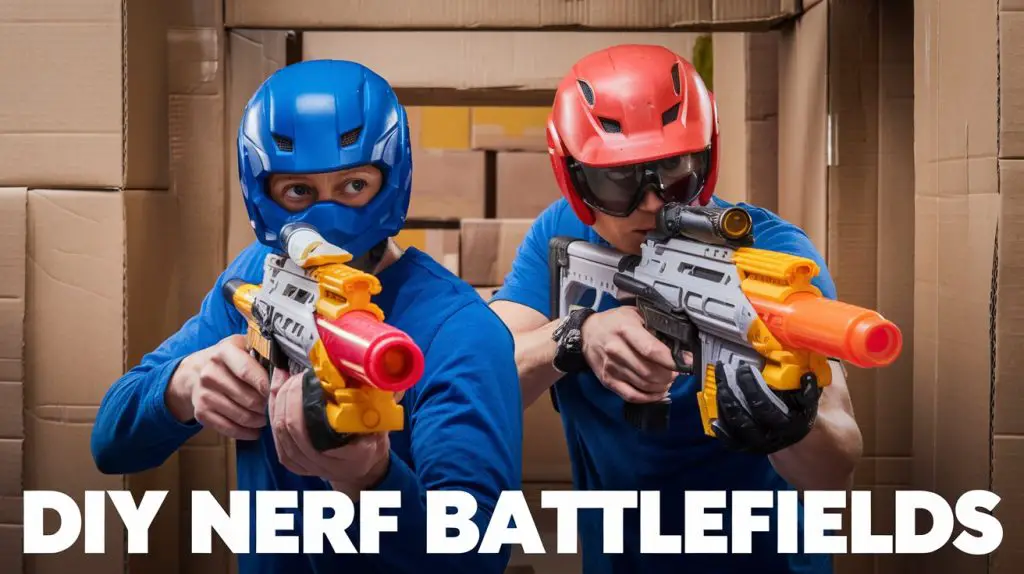
Building Basic Battlefield Obstacles
Every great Nerf battlefield needs a variety of obstacles that provide different tactical options.
Barricades and Walls
Simple Cardboard Barricade:
- Collect large cardboard boxes (appliance boxes work best)
- Cut to desired height (typically 3-4 feet)
- Fold into zigzag pattern for self-standing structure
- Reinforce with duct tape at folds
- Add weight at bottom if needed (books, sandbags)
PVC and Tarp Wall:
- Create rectangular frame using PVC pipes and connectors
- Size according to space (typically 4’x6′ works well)
- Attach tarp using zip ties or bungee cords
- Secure base with sandbags or stakes
- Add viewing ports by cutting small holes in tarp
Wooden Pallet Barrier:
- Clean pallets thoroughly and sand rough edges
- Stand vertically and connect multiple pallets with screws or zip ties
- Secure to ground with stakes or sandbags
- Add camouflage netting or fabric covering if desired
- Paint in thematic colors (optional)
Bunkers and Shelters
Quick-Deploy Blanket Fort:
- Place two chairs facing outward, about 4 feet apart
- Drape large blanket or sheet over chairs
- Secure with clothespins or binder clips
- Weigh down edges with books or other heavy objects
- Create entrance by folding back one section
Sturdy Box Bunker:
- Reinforce large cardboard box by taping all seams
- Cut doorway and windows/firing ports
- Add second layer of cardboard for durability
- Paint exterior in camouflage or team colors
- Secure to ground with stakes or tape
PVC Pipe Dome:
- Create dome framework using flexible PVC pipe
- Connect pipes using three-way and four-way connectors
- Cover with fabric, tarp, or camouflage netting
- Secure covering using zip ties
- Add weight around base perimeter
Movable Cover
Lightweight Shield:
- Cut foam insulation board to 2’x3′ rectangle
- Reinforce edges with duct tape
- Add handle on back using strong tape or zip ties
- Decorate with team colors or thematic designs
- Store flat when not in use
Rolling Cover:
- Attach casters to bottom of plastic storage bin
- Reinforce bin with duct tape around edges
- Add handle for pushing/pulling
- Fill partially with lightweight material for stability
- Create firing ports by cutting small holes
Deployable Pop-Up Cover:
- Modify pop-up laundry hamper by removing bottom
- Reinforce with duct tape around edges
- Add weights to bottom edge
- Create team-colored markers for identification
- Design to fold flat for storage
Advanced Battlefield Elements
Take your battlefield to the next level with these more complex features.
Multi-Level Structures
Simple Platform:
- Secure wooden pallets together to create base
- Add plywood top for smooth surface
- Create simple railing using PVC pipes
- Ensure stability with cross-bracing
- Test weight capacity before use
Observation Tower:
- Build sturdy base using 2×4 lumber
- Create platform approximately 3-4 feet high
- Add safety railings on all sides
- Include stable access ladder or stairs
- Secure to ground or adjacent structures
Connecting Bridges:
- Use sturdy plywood for bridge surface
- Create side rails with PVC pipe
- Support underneath with cross-braces
- Secure to connecting platforms
- Test thoroughly before gameplay
Interactive Elements
Capture Points:
- Create distinctive marker using bucket or container
- Add LED lights for visibility (battery-powered)
- Install simple timer or buzzer system
- Paint in neutral color distinct from team colors
- Make portable for different game configurations
Trigger Targets:
- Mount foam target to cardboard backing
- Attach simple switch behind target
- Connect to battery-powered buzzer or light
- Create reset mechanism
- Secure to wall or freestanding structure
Control Consoles:
- Repurpose old keyboard or control panel
- Connect simple electronics for lights/sounds
- Create protective housing from plastic container
- Add team-specific activation requirements
- Include reset function for multiple games
Specialized Terrain Features
Urban Debris:
- Stack cardboard boxes of various sizes
- Secure together with tape
- Paint to resemble concrete or brick
- Add details like “graffiti” or “warning signs”
- Arrange in irregular patterns
Natural Elements:
- Use green fabric draped over structures for “vegetation”
- Create “rocks” using gray-painted foam blocks
- Add “water features” with blue tarps
- Incorporate real potted plants (for indoor use)
- Use brown tarps for “muddy” terrain
Weather Effects:
- Use bubble machines for “fog”
- Create “snow” zones with white sheets
- Simulate “rain” with hanging blue streamers
- Add sound effects with portable speakers
- Use colored lighting to enhance atmosphere
Battlefield Safety Considerations
Safety should always be the top priority when designing and building your Nerf battlefield.
Structural Safety
Stability Testing:
- Test all structures by pushing from multiple angles
- Ensure platforms can support the weight of multiple players
- Secure top-heavy elements to prevent tipping
- Round or pad sharp corners and edges
- Regularly inspect for damage during play
Trip Hazard Prevention:
- Keep floor areas clear of small obstacles
- Secure all cords and wires
- Mark changes in elevation with bright colors
- Provide adequate lighting throughout the battlefield
- Create clear boundaries for play area
Weather Considerations:
- Design outdoor structures to withstand wind
- Provide drainage for rain
- Secure lightweight elements during windy conditions
- Create shade for hot weather play
- Have indoor backup plan for extreme weather
Player Safety Rules
Essential Safety Guidelines:
- Require eye protection for all participants
- Establish “no-fire zones” for resting players
- Create clear rules about physical contact
- Set age-appropriate velocity limits for blasters
- Implement regular break periods during extended play
Emergency Preparedness:
- Keep first aid kit accessible
- Ensure clear exit paths
- Establish emergency stop word/signal
- Have charged phone available
- Know location of nearest emergency services
Supervision Requirements:
- Adult supervision for younger players
- Designated safety officer for larger events
- Regular safety briefings before play
- Clear consequences for unsafe behavior
- Buddy system for younger participants
Optimizing for Different Game Types
Different Nerf games require different battlefield configurations for optimal play.
Team Deathmatch Setups
The classic team elimination format benefits from these battlefield elements:
- Balanced Cover: Equal protection opportunities for both teams
- Multiple Flanking Routes: At least three distinct paths between team areas
- Respawn Zones: Designated areas for eliminated players to return
- Varied Cover Heights: Mix of full-height and partial barriers
- Clear Team Boundaries: Distinct starting areas for each team
Optimal Layout:
- Symmetrical design for competitive fairness
- 30-40% cover density
- Clear sight lines across no more than 1/3 of the field
- Barriers spaced 5-8 feet apart
- Clearly marked center line
Capture the Flag Configurations
This objective-based game requires specific battlefield elements:
- Flag Stations: Designated areas for flag placement
- Defensive Positions: Cover elements surrounding flag stations
- Mid-Field No Man’s Land: Contested area between territories
- Infiltration Routes: Narrow paths into enemy territory
- Jail Areas: Designated spaces for captured players
Optimal Layout:
- Slightly asymmetrical design to encourage strategy adaptation
- Denser cover near flag stations
- Multiple paths between territories
- Clear markings for territory boundaries
- Safe zones for flag carriers to navigate
Humans vs. Zombies Arenas
This popular scenario game needs specialized battlefield design:
- Safe Zones: Temporary refuge areas for human players
- Choke Points: Narrow passages that are difficult to defend
- Supply Stations: Locations for ammunition or objective items
- Varied Terrain: Mix of open areas and dense cover
- Escape Routes: Multiple exit paths from any position
Optimal Layout:
- Asymmetrical design favoring zombie movement
- Interconnected pathways with multiple junctions
- Limited long sight lines
- Clearly marked boundaries
- Designated starting areas for both factions
Themed Battlefield Ideas
Themed battlefields create immersive experiences that enhance gameplay.
Post-Apocalyptic Wasteland
Create a dystopian battlefield with these elements:
- Scrap Barricades: Barriers made from “salvaged” materials
- Makeshift Shelters: Tarp-covered structures with distressed appearance
- Hazard Zones: Areas marked with warning symbols
- Resource Caches: Designated spots for in-game supplies
- Faction Territories: Distinct areas for different survivor groups
DIY Elements:
- Spray paint cardboard barriers to look weathered
- Add fake “rust” using orange and brown paint
- Create warning signs with radiation or biohazard symbols
- Use plastic barrels as thematic cover
- Add torn fabric and “scavenged” materials to structures
Sci-Fi Space Station
Transport players to a futuristic environment:
- Control Consoles: Interactive elements with lights and buttons
- Corridor Systems: Narrow passageways connecting larger areas
- Airlock Chambers: Transition zones between different sections
- Reactor Core: Central objective area with special significance
- Crew Quarters: Base areas for each team
DIY Elements:
- Use silver/metallic paint on structures
- Add LED lighting for futuristic atmosphere
- Create “control panels” from cardboard and buttons
- Use plastic containers as “cargo modules”
- Add printed “technical diagrams” to walls
Medieval Castle Siege
Create a historical battlefield experience:
- Castle Walls: Tall barriers representing stone fortifications
- Siege Towers: Multi-level structures for attacking players
- Gatehouse: Controlled entry point to inner castle
- Throne Room: Central objective area
- Outer Bailey: Defensive perimeter around castle
DIY Elements:
- Paint cardboard to resemble stone blocks
- Create crenellations (castle wall tooth pattern) on barriers
- Use fabric banners with team symbols
- Add “torches” using LED flickering lights
- Create drawbridge or gate mechanisms
Portable and Temporary Battlefields
Not all situations allow for permanent setups. These solutions offer quick deployment and easy storage.
Party and Event Setups
Perfect for birthday parties or special events:
- Inflatable Barriers: Commercial or DIY air-filled obstacles
- Pop-Up Structures: Collapsible frames with fabric coverings
- Weighted Bases: Sand-filled containers that support temporary walls
- Quick-Connect Systems: Hook-and-loop or snap-together components
- Modular Panels: Interlocking barrier sections
Setup Tips:
- Arrive 1-2 hours before event for assembly
- Create simple color-coding system for quick assembly
- Use numbered components for correct assembly order
- Prepare layout diagram for helpers
- Test stability before allowing play
Indoor Temporary Battlefields
Transform living spaces for rainy day play:
- Furniture Fortresses: Strategic arrangement of existing furniture
- Blanket Barriers: Sheets and blankets draped over supports
- Pillow Perimeters: Soft, safe barriers using couch cushions and pillows
- Laundry Basket Bunkers: Upturned baskets as personal cover
- Cardboard Constructions: Quick-assembly cardboard barriers
Setup Tips:
- Establish clear boundaries away from fragile items
- Use painter’s tape to mark floor boundaries
- Create designated “safe zone” for breaks
- Implement lower velocity rules for indoor play
- Plan for quick cleanup and restoration
Portable Field Kits
Create packable battlefield elements for mobile Nerf adventures:
- Collapsible Frames: PVC pipe structures that disassemble
- Rollable Barriers: Fabric panels that roll up for transport
- Inflatable Elements: Air-filled obstacles that pack small
- Folding Shields: Hinged barrier panels
- Stuff Sack Bunkers: Fabric shells filled with local materials (leaves, etc.)
Packing Tips:
- Create dedicated storage containers for components
- Label all parts clearly
- Include basic repair supplies (tape, zip ties)
- Develop checklist for complete kit
- Practice setup/breakdown before field use
Maintaining and Evolving Your Battlefield
Keep your battlefield fresh and functional with these ongoing considerations.
Repair and Maintenance
Regular upkeep ensures safety and longevity:
- Weekly Inspections: Check all structures for damage
- Immediate Repairs: Fix any compromised elements before next use
- Weather Protection: Apply waterproofing to outdoor elements
- Cleaning Schedule: Remove dirt and debris regularly
- Seasonal Storage: Proper protection during off-season periods
Maintenance Checklist:
- Tighten all connections
- Replace worn coverings
- Reinforce high-wear areas
- Clean all surfaces
- Document repairs for future reference
Expanding Your Battlefield
Grow your setup over time with these approaches:
- Modular Design: Create new elements that connect to existing structures
- Themed Expansions: Add new sections with distinct environmental themes
- Vertical Growth: Add upper levels to existing ground structures
- Specialty Zones: Create areas optimized for specific game types
- Interactive Upgrades: Add electronic or mechanical elements to basic structures
Expansion Planning:
- Maintain consistent scale across all elements
- Ensure new additions match existing aesthetic
- Test integration before permanent installation
- Consider storage requirements for new elements
- Develop phase-based expansion plan
Adapting to Player Feedback
Evolve your battlefield based on player experience:
- Post-Game Surveys: Gather feedback after play sessions
- Observation Notes: Watch how players use the battlefield
- Heat Mapping: Track where most player interactions occur
- Difficulty Assessment: Evaluate if balance favors certain teams/positions
- Fun Factor Analysis: Identify which elements generate most enjoyment
Implementation Strategy:
- Make small adjustments between games
- Test major changes with controlled play sessions
- Document changes and their effects
- Be willing to revert unsuccessful modifications
- Involve regular players in design discussions
Community and Collaborative Battlefields
Expand beyond personal battlefields to create community experiences.
Neighborhood Battle Zones
Create shared play spaces for local communities:
- Rotating Hosts: Different backyards on scheduled days
- Shared Equipment Pool: Community-owned battlefield elements
- Work Parties: Group construction and setup events
- Scheduled Play Times: Regular sessions to maximize participation
- Neighborhood Rules: Standardized gameplay for consistent experience
Organization Tips:
- Create social media group or chat for coordination
- Develop equipment checkout system
- Establish clear responsibilities for setup/cleanup
- Create weather contingency plans
- Implement noise and time restrictions for neighborhood harmony
School and Organization Events
Create larger-scale events for schools, churches, or community groups:
- Multi-Zone Battlefields: Separate areas for different age groups
- Rotation Stations: Different game types in distinct areas
- Spectator Accommodations: Safe viewing areas for non-players
- Registration Systems: Organized player tracking
- Safety Briefing Areas: Dedicated spaces for rules explanation
Planning Considerations:
- Obtain proper permissions and insurance
- Create clear waiver and participation forms
- Recruit sufficient volunteer staff
- Establish first aid station
- Develop inclement weather backup plans
Tournament Setups
Design battlefields suitable for competitive play:
- Standardized Dimensions: Consistent sizing for fair competition
- Referee Positions: Designated spots with good visibility
- Timing Systems: Clocks and signals for match management
- Team Staging Areas: Preparation zones for competing teams
- Audience Viewing: Spectator areas with good sightlines
Tournament Requirements:
- Create detailed field specifications document
- Implement testing period before official matches
- Develop field reset procedures between matches
- Create backup components for quick repairs
- Establish clear boundaries and out-of-bounds markers
Digital Enhancements for Modern Battlefields
Incorporate technology to create next-level Nerf experiences.
Lighting Systems
Create atmosphere and functional indicators:
- Zone Lighting: Different colored lights for team territories
- Objective Indicators: Lights that change based on game status
- Mood Lighting: Ambient effects to enhance theme
- Signal Systems: Flashing patterns to indicate game events
- Path Marking: Floor-level lighting for navigation
Implementation Options:
- Battery-powered LED strips
- Solar garden lights for outdoor fields
- Color-changing smart bulbs
- Motion-activated lighting
- Programmable light controllers
Sound Effects
Add auditory elements to enhance immersion:
- Ambient Soundscapes: Background audio matching battlefield theme
- Event Triggers: Sounds indicating game events
- Countdown Timers: Audible time signals
- Zone Indicators: Different sounds for different areas
- Warning Systems: Alerts for game phase changes
Technical Setup:
- Bluetooth speakers positioned throughout battlefield
- Smartphone-controlled sound systems
- Motion-triggered sound effects
- Preprogrammed audio sequences
- Weatherproof speakers for outdoor use
Scoring and Game Management
Use technology to track gameplay elements:
- Electronic Capture Points: Buttons or sensors that register team control
- Digital Scoreboards: Displays showing current game status
- Timer Systems: Countdown clocks for match duration
- Player Tracking: Systems to monitor eliminations and objectives
- Announcement Systems: Speakers for referee communications
DIY Options:
- Arduino-based control systems
- Smartphone apps for scoring
- Wireless buzzers for objective capture
- LED number displays
- QR code check-in systems
Conclusion
Creating your own DIY Nerf battlefield transforms ordinary foam dart play into extraordinary tactical experiences. Whether you’re building a simple backyard setup with cardboard barriers or designing an elaborate themed arena with electronic elements, the effort invested pays dividends in gameplay enjoyment and memorable experiences.
The beauty of DIY battlefields lies in their adaptability. You can start small with basic elements and gradually expand as your interest grows. Each addition and modification creates new strategic possibilities and keeps the experience fresh for regular players. By incorporating player feedback and observing how your battlefield is used, you can continuously evolve your design to maximize fun and engagement.
Remember that the most successful battlefields balance several key factors: safety, fairness, strategic depth, and thematic immersion. By carefully considering these elements during your planning and construction process, you’ll create a play space that appeals to Nerf enthusiasts of all ages and skill levels.
Whether you’re hosting birthday parties, neighborhood games, or competitive tournaments, your custom battlefield will become the centerpiece of memorable Nerf experiences. The skills developed through designing and building these play spaces—creativity, problem-solving, spatial thinking, and construction techniques—are valuable beyond the game itself.
So gather your materials, sketch your plans, and start building. Your ultimate DIY Nerf battlefield awaits, limited only by your imagination and creativity.
Frequently Asked Questions
Q: How much space do I need for a decent Nerf battlefield?
A: While more space allows for more elaborate setups, you can create engaging battlefields in areas as small as 20’x20′. For optimal play, aim for approximately 100-150 square feet per player.
Q: What’s the most cost-effective material for building battlefield elements?
A: Cardboard remains the most budget-friendly option, especially when sourced for free from appliance stores or recycling centers. PVC pipe is also relatively inexpensive and creates more durable structures.
Q: How can I make my indoor battlefield safe for my home?
A: Use soft materials like pillows and blankets, establish strict velocity limits for blasters, require eye protection, create clear boundaries away from fragile items, and use painter’s tape for floor markings that won’t damage surfaces.
Q: How long does it typically take to set up a battlefield?
A: Setup time varies widely based on complexity. Simple arrangements of furniture and cardboard can be ready in 30 minutes, while elaborate themed battlefields might require 2-3 hours. Plan for longer setup times for first-time assemblies.
Q: How can I store battlefield elements when not in use?
A: Design with storage in mind by creating collapsible or stackable elements. Use dedicated storage containers for smaller components, and consider wall-mounted storage solutions for larger pieces. Label everything clearly for easier future setup.

I am a Nerf gun fan, researcher and modder. I post reviews about Nerf blasters and also share tips to solve issues with your toy guns.

